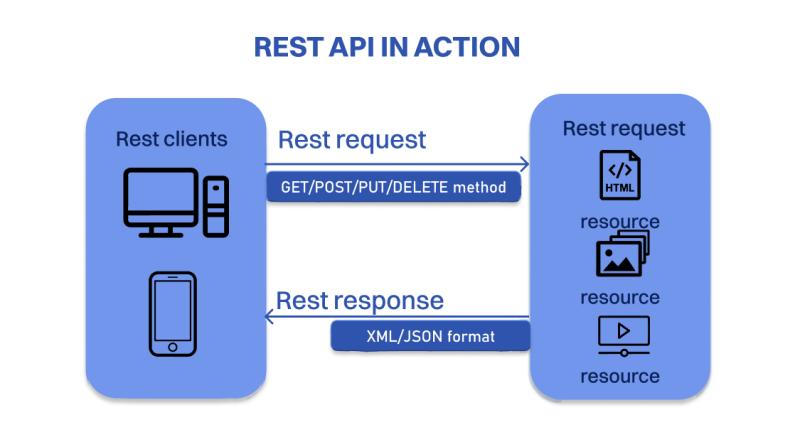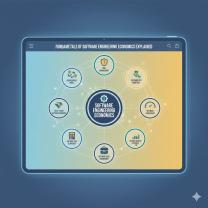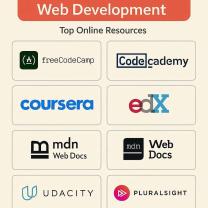What is web design and web development?
Web Design and Web Development are two distinct but closely related disciplines that together contribute to the creation and maintenance of websites. Both play crucial roles in building a successful online presence, but they involve different skill sets and responsibilities.
Web Design:
Web design focuses on the visual aesthetics and user experience of a website. Designers work on the look and feel of a site, ensuring that it is visually appealing, user-friendly, and aligned with the brand identity. Key aspects of web design include:
Layout and Structure:
- Determining the overall structure and layout of a website, including the arrangement of elements, navigation, and page hierarchy.
Graphic Design:
- Creating visual elements such as graphics, images, and icons that enhance the website's visual appeal.
Color Palette and Typography:
- Choosing appropriate color schemes and typography to create a cohesive and visually pleasing design.
User Interface (UI) Design:
- Designing the user interface elements that users interact with, including buttons, forms, and other interactive components.
Responsive Design:
- Ensuring that the design is responsive and adapts to different devices and screen sizes, providing a consistent experience.
Wireframing and Prototyping:
- Creating wireframes and prototypes to plan the layout and functionality of the website before the development phase.
User Experience (UX) Design:
- Focusing on creating a positive and intuitive experience for users, including considerations for usability and accessibility.
Collaboration with Clients:
- Working closely with clients or stakeholders to understand their requirements and incorporating their feedback into the design.
Web Development:
Web development involves the actual coding and programming that brings a website to life. Developers turn the design into a functional website, handling the technical aspects and ensuring that the site works smoothly. Key aspects of web development include:
Front-End Development:
- Building the client-side of the website that users interact with directly. This involves coding with languages such as HTML, CSS, and JavaScript.
Back-End Development:
- Building the server-side of the website that handles databases, server requests, and other behind-the-scenes functionalities. This often involves languages like PHP, Python, Ruby, or Java.
Database Management:
- Creating and managing databases that store and organize the website's data. Common database systems include MySQL, PostgreSQL, and MongoDB.
Server Configuration:
- Configuring and maintaining the server environment to ensure the website runs smoothly and securely.
Security Implementation:
- Implementing security measures to protect the website from common vulnerabilities, such as SQL injection, cross-site scripting (XSS), and more.
Content Management Systems (CMS):
- Integrating and customizing CMS platforms (e.g., WordPress, Drupal) to allow non-technical users to manage and update website content.
Version Control:
- Using version control systems (e.g., Git) to track changes, collaborate with other developers, and manage the codebase effectively.
Testing and Debugging:
- Conducting thorough testing of the website to identify and fix bugs, ensuring that it functions as intended across different browsers and devices.
Deployment:
- Deploying the website to a hosting server and managing the ongoing maintenance and updates.
While web designers and web developers often collaborate closely, their primary focuses and skill sets differ. Successful websites typically require the combined efforts of both design and development teams to achieve a seamless and effective online presence.
Unraveling the Web: Design vs. Development
1. Distinguishing Web Design from Web Development:
Web Design focuses on the visual aesthetics and user experience of a website. It involves aspects like:
- Color palettes, typography, and layout
- Information architecture and user interface (UI) design
- Usability and accessibility considerations
- Branding and visual identity
Web Development is the process of building and maintaining the functionality of a website. It involves aspects like:
- Coding with languages like HTML, CSS, and JavaScript
- Building database connections and server-side programming
- Ensuring website performance and security
- Integrating features and functionalities
2. Necessary Skills:
Web Design:
- Strong visual sense and design principles
- User interface (UI) and user experience (UX) design skills
- Communication and collaboration skills
- Knowledge of design software like Adobe Photoshop and Illustrator
Web Development:
- Strong understanding of programming languages and frameworks
- Problem-solving and analytical skills
- Attention to detail and accuracy
- Familiarity with databases and servers
3. Collaboration for Great Websites:
Web design and development work hand-in-hand to create successful websites. It's a symbiotic relationship:
- Designers provide mockups and prototypes, guiding developers with the visual direction.
- Developers utilize the design and build the underlying code to make the website functional.
- Continuous collaboration ensures the website looks good, works well, and meets user needs.
4. Common Tools and Technologies:
Web Design:
- Adobe Photoshop and Illustrator
- Sketch and Figma
- Webflow and Wix
- UI/UX design tools like InVision and Adobe XD
Web Development:
- HTML, CSS, and JavaScript
- Backend languages like Python, PHP, and Ruby on Rails
- JavaScript frameworks like React and Angular
- Content management systems (CMS) like WordPress and Drupal
5. Successful Project Examples:
- Spotify: Clean and intuitive UI, personalized user experience.
- Apple: Minimalist design, focus on user-friendliness, strong branding.
- Dropbox: Simple and efficient interface, seamless file sharing functionality.
- Airbnb: User-driven design, engaging photography, clear navigation.
- Mailchimp: User-friendly email marketing platform, visually appealing templates.
By understanding the distinct roles of web design and development, mastering relevant skills, and utilizing available tools effectively, you can contribute to creating successful and impactful websites in the ever-evolving digital landscape.













